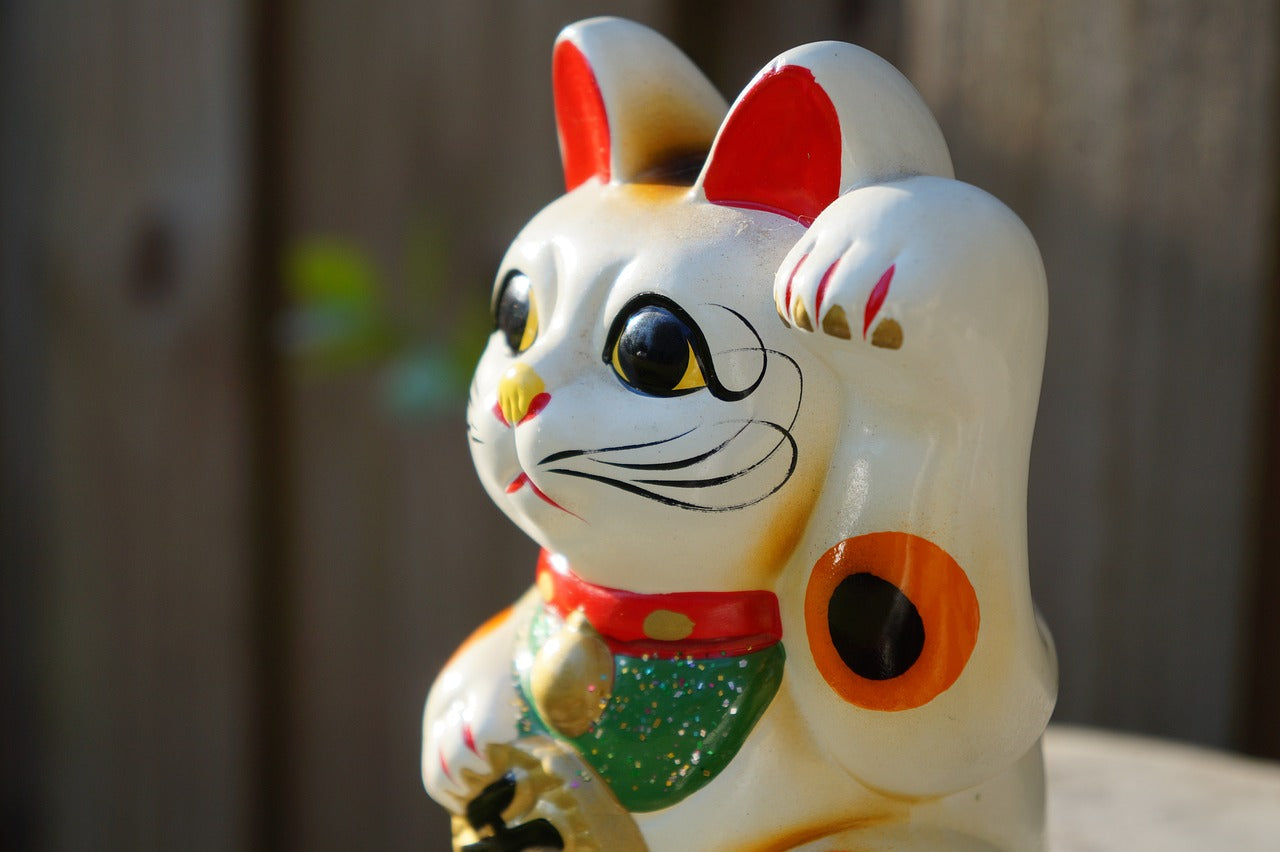Ma con 2 scatta la magia: -5%!
Con 3 arriva l’incanto: -7%!
E se ne scegli 4, il bosco ti ringrazia con un bel -10%!
Scegli quelle che ti parlano…
e lascia che la meraviglia si moltiplichi. ☕💫*
*Offerta NON cumulabile con altri sconti
Ma con 2 scatta la magia: -5%!
Con 3 arriva l’incanto: -7%!
E se ne scegli 4, il bosco ti ringrazia con un bel -10%!
Scegli quelle che ti parlano…
e lascia che la meraviglia si moltiplichi. ☕💫*
*Offerta NON cumulabile con altri sconti

Dear all, today I want to take you on a fascinating journey through the history and symbolism of one of Asia's most beloved and meaningful little animals: the Maneki-neko, also known as the "lucky cat."
This little cat that raises its paw in a gesture that seems to be a greeting, but is actually an invitation, is an icon that carries with it an ancient history. Do you want to know more?
Many of you may be surprised to learn that the Maneki-neko, although often called the "Chinese lucky cat", actually has Japanese origins. Translated as "calling cat" (Maneki - to call, neko - cat), its main characteristic is the raised paw, a gesture that invites good luck.
Initially they were considered protectors of agricultural products, especially silkworms from rodents. Little by little they became symbols of prosperity for the silk industry and then more generally for all commercial activities.
One of the most famous legends It has its roots in the Edo period (1603-1868) and tells of a cat belonging to a poor monk. One day, the cat raised its paw as if calling a passing traveler. The traveler, intrigued, approached just as lightning struck the tree he had been standing under a moment before. Grateful for being saved, he became a benefactor of the temple, which prospered. Since then, the cat waving "hello" has been considered a lucky charm.

In China, the Maneki-neko is often integrated into feng shui practices, where it is used to attract prosperity and good luck in homes and workplaces, placing it at the entrance in a high point and facing people passing by. But one Maneki-neko is not like another!
One of the things I love about the Japanese lucky cat is the variety of poses and colors, each with a particular meaning. Let's see them together:

It should also be noted that the higher the paws are raised, the stronger or more distant the fortune invoked is believed to be, and that the meaning also varies according to the colors:
Often accompanied by a gold coin, it may also be adorned with bell collars, empty sake barrels, daikon radishes, drums, and other symbols of good luck.
In short, the Maneki-neko is not just a decorative object, but a symbol of luck and prosperity with a fascinating history and rich symbolism. Personally, I love making these lucky cats in my workshop, putting care and attention into every detail. Creating a Maneki-neko is like infusing a little piece of luck into the homes of those who welcome it.
I hope this journey into the history of Maneki-neko has intrigued and fascinated you. See you soon!
Stephanie
